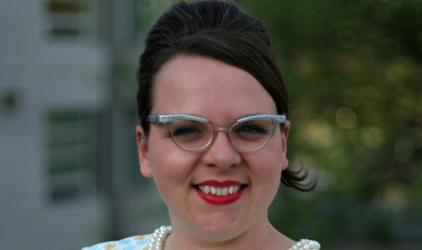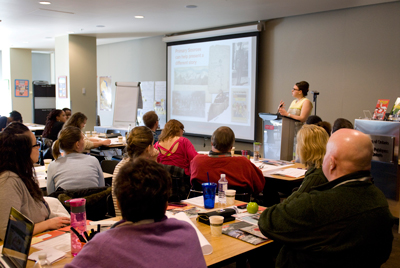Meaningful Learning in History (Samantha Cutrara)

“Miss, can I say that the perspectives of being home during World War I were both downtrodden and nostalgic?”
I paused. I was just about to walk away. This student had just asked me the definition of ‘downtrodden’ and by the way he stared past me, seemed detached, nodded absently; by the way he had his head down during my presentation, by the way he reluctantly moved to his group, by the way he resisted getting the supplies from the activity, I thought he wasn’t paying attention. I thought he was going to spend the whole work period slowly working his way through one of the many letters I provided and not be bothered to complete the task. I thought he was a lost cause.
But then, from what I saw as fog, from what I interpreted as disinterest, from what I judged as a waste, I realized I was wrong. I saw that he was not only paying attention, I saw he had been thinking. I saw that he had been making connections. I saw that he had been interpreting what he read with what he knew and created an insightful, and touching, thesis statement about what he thought home was like for a World War I soldier and his family back home. I saw that he learned and I saw that he was able to make meaningful connections.
I have been a history educator for 15 years, with a research focus for 10 of those years, and my interest has always been on students and whether they are learning history worthy of their time and respect. My work is about creating opportunities for students to learn meaningfully with and about historical narratives. Through both my research and practice, I am interested in making students and their meaningful learning the focus of conversation about history education and insisting that their voices set the tone for what can happen in the classroom today and in the future.
I define meaningful learning in history as learning that has significance to students’ lives now and in the future, both inside and outside of school, and with interpretations of the past that align with their own sense of familial or community history in and for the wider world. During my dissertation research (York University, 2012) I found that students have a desire to learn history meaningfully but their past experiences have often limited the opportunities for them to learn to their full potential. During my research I saw that even those teachers who wanted to provide meaningful learning opportunities for their students often pigeon-holed students in “curricular roles” that treated students as rote learners instead of engaged thinkers, thus limiting the opportunities for meaningful engagement with history.
As other researchers before me, I echo the findings that history education needs to be facilitated by active, involved, and collaborative instruction that values students’ contributions at the very core of the process. Led by educators interested in providing “critical care” to their students, this instruction must feature students’ negotiation of meaning with historical content in a patient and supportive class environment. I have found that, more than content or instruction, meaningful learning with historical narratives is based on a relational interaction between teacher, student, and their learning, and that teachers are the driving force in creating a classroom community in which this can take place.
 The implications of this research indicate that instead of solely focusing on content or instruction, history education research has to attend to the ways that teaching and learning are personal interactions that have an influence on how students (and teachers) come to know themselves, each other, their present, and their past. Too great a focus can be paid on better content or instruction, when attention needs to be paid to ways to support teachers in coming to know and teach for the students in their classes.
The implications of this research indicate that instead of solely focusing on content or instruction, history education research has to attend to the ways that teaching and learning are personal interactions that have an influence on how students (and teachers) come to know themselves, each other, their present, and their past. Too great a focus can be paid on better content or instruction, when attention needs to be paid to ways to support teachers in coming to know and teach for the students in their classes.
Since finishing my dissertation, I have had the privilege of applying these practices and principles to an education strategy for a province-wide organization focused on preserving and presenting the past. In this role I not only run programmes for students in both elementary and secondary schools, but also workshops for teachers and teacher candidates on how to apply principles of student-led inquiry in their history class. With every workshop and every student I work with, these learnings are once again practiced and refined and I feel privileged to have the opportunity to continue this work and make it relevant to classroom practice.
- Se connecter ou créer un compte pour soumettre des commentaires
- Français

